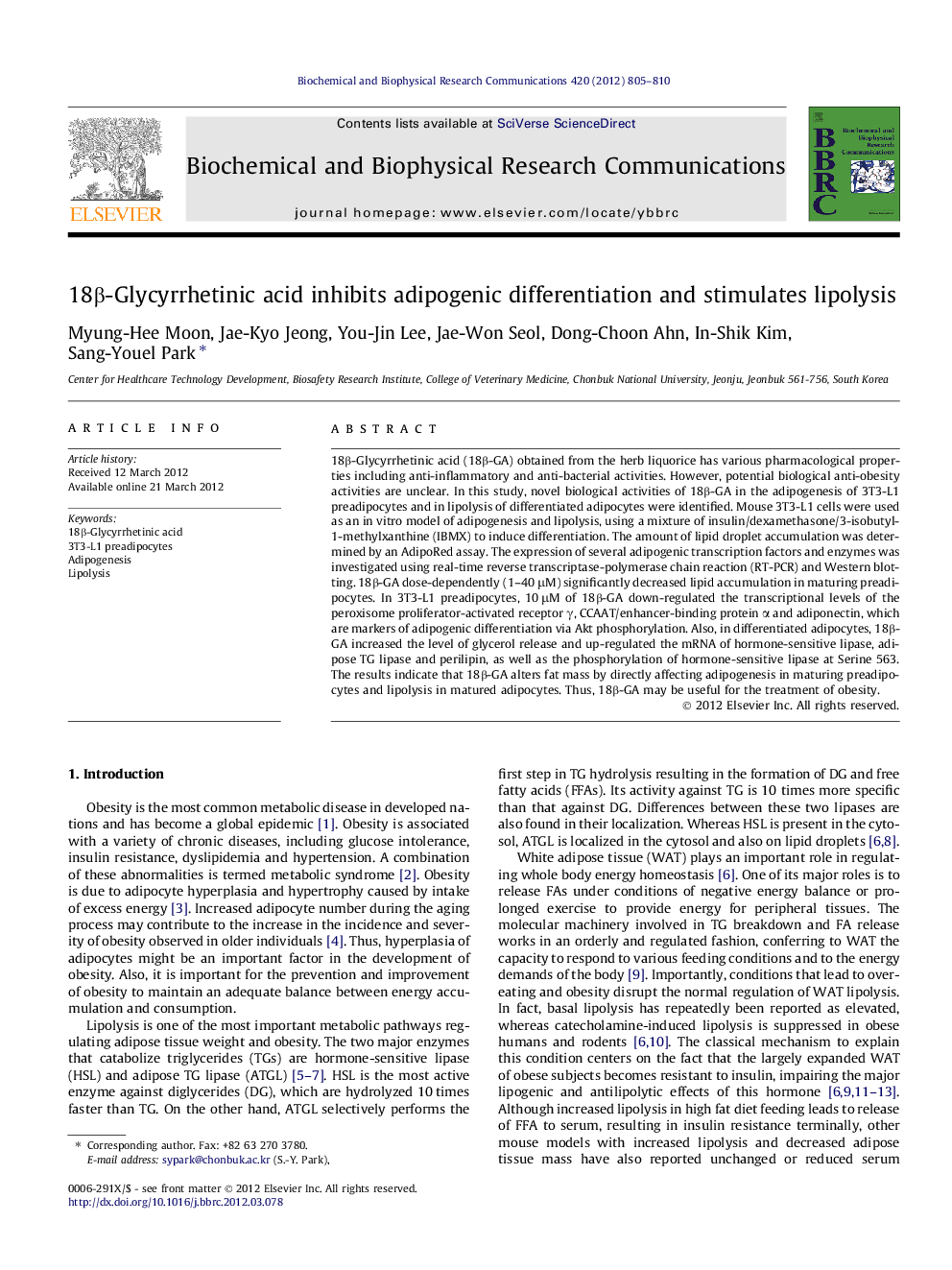| Article ID | Journal | Published Year | Pages | File Type |
|---|---|---|---|---|
| 1929564 | Biochemical and Biophysical Research Communications | 2012 | 6 Pages |
18β-Glycyrrhetinic acid (18β-GA) obtained from the herb liquorice has various pharmacological properties including anti-inflammatory and anti-bacterial activities. However, potential biological anti-obesity activities are unclear. In this study, novel biological activities of 18β-GA in the adipogenesis of 3T3-L1 preadipocytes and in lipolysis of differentiated adipocytes were identified. Mouse 3T3-L1 cells were used as an in vitro model of adipogenesis and lipolysis, using a mixture of insulin/dexamethasone/3-isobutyl-1-methylxanthine (IBMX) to induce differentiation. The amount of lipid droplet accumulation was determined by an AdipoRed assay. The expression of several adipogenic transcription factors and enzymes was investigated using real-time reverse transcriptase-polymerase chain reaction (RT-PCR) and Western blotting. 18β-GA dose-dependently (1–40 μM) significantly decreased lipid accumulation in maturing preadipocytes. In 3T3-L1 preadipocytes, 10 μM of 18β-GA down-regulated the transcriptional levels of the peroxisome proliferator-activated receptor γ, CCAAT/enhancer-binding protein α and adiponectin, which are markers of adipogenic differentiation via Akt phosphorylation. Also, in differentiated adipocytes, 18β-GA increased the level of glycerol release and up-regulated the mRNA of hormone-sensitive lipase, adipose TG lipase and perilipin, as well as the phosphorylation of hormone-sensitive lipase at Serine 563. The results indicate that 18β-GA alters fat mass by directly affecting adipogenesis in maturing preadipocytes and lipolysis in matured adipocytes. Thus, 18β-GA may be useful for the treatment of obesity.
► 18β-GA inhibits adipogenic differentiation in 3T3-L1 preadipocytes and stimulates lipolysis in differentiated adipocytes. ► Anti-adipogenic effect of 18β-GA is caused by down-regulation of PPARγ and inactivation of Akt signalling. ► Lipolytic effect of 18β-GA is mediated by up-regulation of HSL, ATGL and perilipin and activation of HSL.
